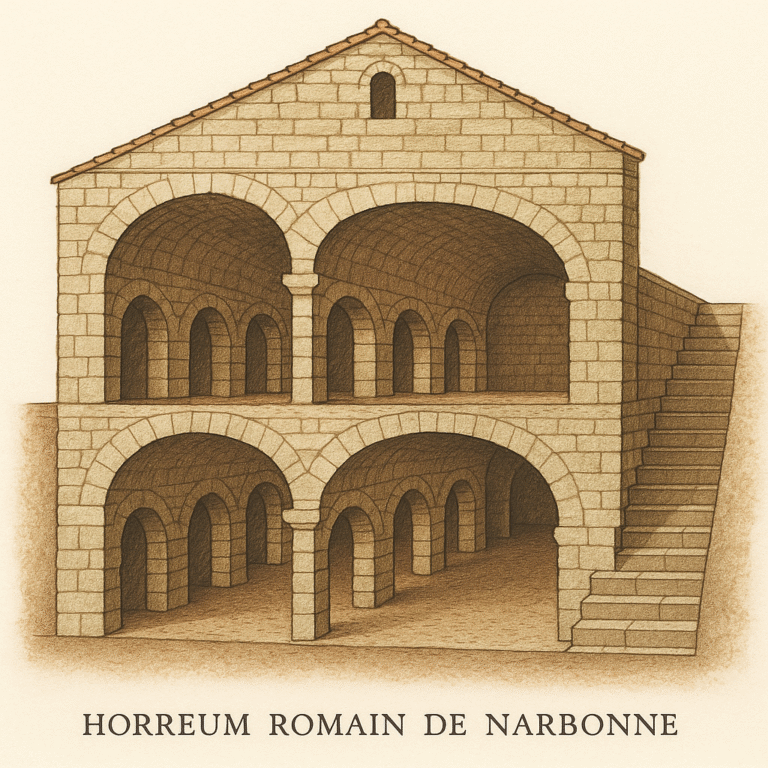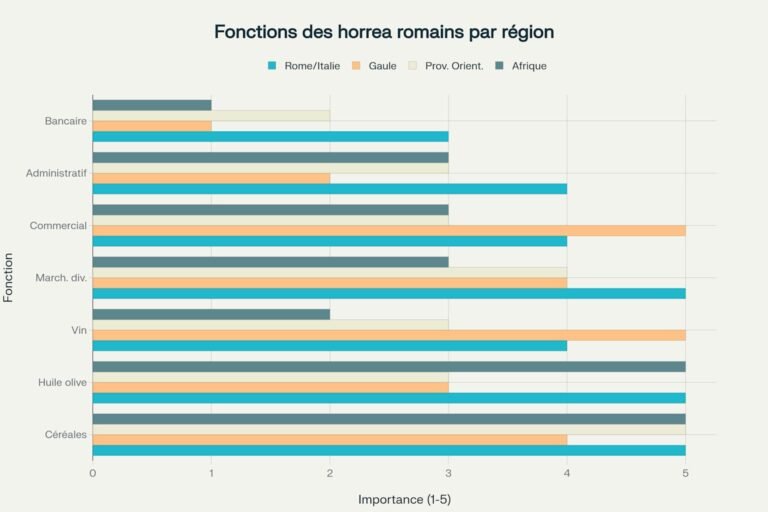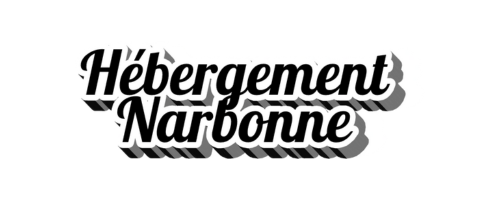The Roman Horreum of Narbonne: an underground archaeological treasure
The Horreum of Narbonne represents one of the rare Roman monuments still visible in the heart of the modern city, testifying to the rich ancient past of this former Roman colony . Located a hundred meters north of the Archbishop Palace, this network of underground galleries constitutes an exceptional vestige of Roman architecture in Narbonne Gaul .
Summary

History and context of Narbo Martius
The Foundation and the importance of Narb Martius
First Roman colony founded in Gaul in 118 BC. AD, Narbo Martius (the current Narbonne) occupied an exceptional strategic position . Located at the crossroads of the Domitian and Aquitaine tracks, it constituted a vital commercial node connecting Hispania, Aquitaine, Gaul, Rome and the Mediterranean . Its ancient port was considered to be the second western western port after that of Rome .
Roman town planning of Narbonne
The Roman city was organized according to a classic orthogonal plan with a central forum and a network of main streets including the Cardo (North-South axis) . The City's political and commercial heart forum, was surrounded by important public buildings . It was precisely south of this forum, on the edge of the Cardo, that the building was built, the horreum of which was the underground foundations .
Horreum: architecture and characteristics
Architectural description
The Horreum of Narbonne consists of underground galleries located 5 meters below the current level of the city . These impressive structures, built in the 1st century BC, have remarkable dimensions with a width of 7.25 meters and a steep height of 2.30 meters on average .
Structure and composition
The underground network revolves around three main wings (west, south and north) . The west gallery covers 50 meters while the north gallery measures 37.7 meters, covering a total area of approximately 200 m² . Each wing includes a central corridor flanked by small side parts with narrow openings .
Roman construction techniques
The Galleries de l'Horreum perfectly illustrate Roman construction techniques with the use of cradle vaults and semicircular arches . The Roman builders used a wooden formwork system on which a tile mortar was poured (mixture of lime and terracotta fragments) which, by drying, formed an extremely resistant monolithic structure .
Horreum function and use
Definition and role of Horrea in the Roman Empire
The Latin term "horreum" (plural "horrea") designated in Roman antiquity a warehouse . Although often associated with cereal storage, the Horrea also used to store other goods such as olive oil, wine, clothes, and even precious materials such as marble .

Hypotheses on the function of Narbonne Horreum
The exact function of the building which was above the underground galleries of Narbonne is still uncertain . Archaeologists assume that it was a market or a commercial warehouse, which its strategic location suggests near the forum and the Cardo, in the commercial heart of the city . These underground foundations would have been used to regulate the temperature and to protect the stored goods .
Comparison with other Roman horrea
The Horrea were common structures in the cities and the forts of the Roman Empire . In Rome, the most important as the Horrea Galbae covered immense surfaces (21,000 m²) and included hundreds of parts . Compared, the Horreum of Narbonne is of modest size but its exceptional state of conservation makes it a unique example in Western Europe .
Discover La Maison Gustave
Discover La Villa Ambrosia
Archaeological discovery and excavations
Rediscovery and first studies
The existence of the Horreum underground galleries was officially reported in 1838, although at the beginning of the 18th century, the scholar G.-A. Lafont had confused them with the Roman amphitheater . Between 1838 and 1842, the members of the archaeological and literary commission of Narbonne undertook the first excavations, discovering in particular a pavement in opus spicatum .
Successive excavation campaigns
From 1930 to 1943, the underground passages were explored and searched by Father Signal, before this work was interrupted during the Second World War, the period during which the galleries served as shelter for passive defense . In 1945, a survey under rue Rouget-de-Lisle made it possible to recognize the extension of the south wing, and it was at this time that the term "horreum" began to be used to designate these structures .
Modern excavations and recent research
In 1967 and 1968, archaeologist Yves Solier continued the exploration of underground galleries . More recently, modern archaeological prospecting techniques have made it possible to better understand the integration of horreum into the urban fabric of Narbo Martius . This research is part of a broader effort to understand the port and commercial system of the ancient city .
Conservation and development
Protection and classification
Horreum underground galleries were classified as historic monuments in 1961, thus recognizing their exceptional heritage value . This legal protection made it possible to ensure their preservation and to consider their development for the public .
Developments for the visit
After development work, Horreum was opened to the public in 1976 . Since 1997, underground galleries have been part of a complex that also includes an entrance to the ground floor, an exhibition space and two courses . Visitors can today explore the two main underground galleries (west and north) and discover Roman architectural ingenuity .
Conservation challenges of underground structures
The conservation of underground monuments such as Horreum poses specific challenges linked to humidity, water infiltration and the pressures exerted by modern surface constructions . Conservation techniques must respect the authenticity of the site while ensuring its sustainability and accessibility to the public .
Horreum in the Narbonne cultural landscape
Integration into the tourist and cultural circuit
Today, Horreum constitutes, with the archaeological vestiges of the Clos de la Lombard, one of the only visible and visible Roman monuments in the center of Narbonne . It is part of a tourist circuit allowing you to discover the rich ancient past of the city .
Management by EPCC NARBO via
Since 2020, the Horreum has been managed by the Public Establishment for Cultural Cooperation (EPCC) NARBO Via, which also brings together the Narbo Museum via and the Amphoralis site in Sallèles-d'Aude . This common management allows a coherent approach to the valuation of the Roman heritage of Narbonne .
The Narbo Museum via: Modern complement to Horreum
Recently inaugurated, the Narbo Museum Via, designed by the architect Norman Foster, constitutes an essential complement to the visit of the Horreum . This 8000 m² museum has more than 9000 archaeological pieces from excavations carried out in Narbonne and in its region, allowing to contextualize the vestiges of Horreum in the largest whole of Narbo Martius 2 .
Scientific and heritage importance
Unique testimony of Roman architecture
The Horreum of Narbonne constitutes an exceptional testimony of Roman architectural ingenuity and their mastery of underground construction techniques . The quality of its walls and the robustness of its vaults, which have crossed two millennia, testify to the know-how of Roman builders .
Contribution to the understanding of Narbo Martius
Horreum research has contributed significantly to the understanding of town planning and the economic organization of Narbo Martius . They notably made it possible to better understand the commercial importance of the city and its role as a hub in the Mediterranean exchange network .
Rarerity of preserved Roman underground structures
The scarcity of both preserved Roman underground structures gives horreum an exceptional archaeological value . In France, this type of underground vestige (also called cryptoportic) is uncommon, which strengthens the importance of its preservation and its study .
'Horreum Romain de Narbonne represents an exceptional architectural testimony of the ancient past of the city and constitutes one of the rare vestiges directly visitable by the old Narbo Martius. Its remarkable preservation through the centuries, the quality of its construction and its integration into the modern urban fabric make it a unique example of conservation of archaeological heritage in urban areas. The visit of these underground galleries offers an immersive experience allowing to understand the ingenuity of Roman construction techniques and the commercial importance of this old colony. Associated with the Narbo Museum Via and the other archaeological sites of the region, the Horreum participates in the reconstruction of the prestigious Roman past of Narbonne, the first capital of Gaul and formerly nicknamed "Daughter of Rome". The continuation of archaeological research in Narbonne, as evidenced by the recent discoveries of the High Empire enclosure and warehouses in the district of ancient urban port, continues to enrich our understanding of the horreum and its historical context. These new knowledge makes it possible to better value this unique heritage, a real underground treasure in the heart of the modern city.
Retain
- The Horreum of Narbonne is one of the rare Roman monuments still visible and visitable in the city center, witness to the prestigious past of Narbo Martius, first Roman colony of Gaul.
- It is a network of underground galleries built in the 1st century BC, 5 meters under modern ground, which formed the foundations of a building probably intended for trade or storage (market or warehouse).
- The term "horreum" means "warehouse" in Latin; These structures were essential to the economic and commercial life of the Roman cities.
- The galleries, vaulted according to Roman techniques, testify to the ancient architectural ingenuity and the use of the tile mortar, water -repellent and very resistant material.
- Rediscovered in the 19th century, the galleries were classified as a historic monument in 1961 and opened to the public in 1976, after various reshuffles and reuses over the centuries.
- Horreum, with the Narbo museum via, allows today to discover daily life, commercial activity and architectural heritage of the Roman Narbonne.


